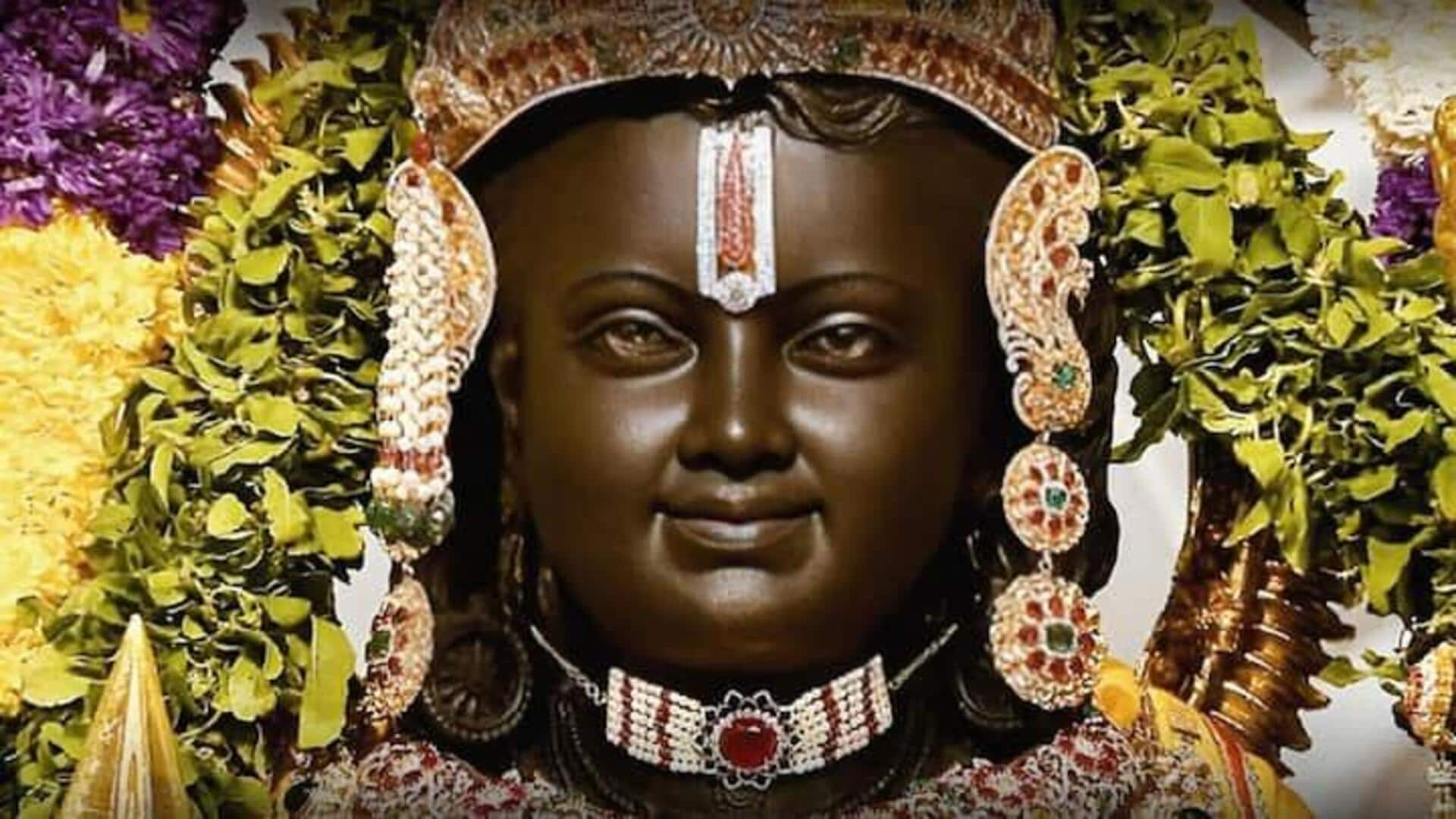
Explained: The science behind Ram Lalla's 'Surya Tilak'
What's the story
A "Surya Tilak" (Sun's rays) illuminated Lord Ram Lalla idol's forehead at the Ram Mandir in Ayodhya on the occasion of Ram Navami on Wednesday. This tilak was made possible by an elaborate mechanism involving mirrors and lenses. Notably, this was the first Ram Navami since the consecration of the Ram idol at the Ayodhya temple, inaugurated by Prime Minister Narendra Modi on January 22. Here's what we know about the science behind the "Surya Tilak."
Twitter Post
Watch the 'Surya Tilak' phenomenon here
Watch the #SuryaTilak now on YouTube Dd National pic.twitter.com/HvhbBrz0Rc — Ordinary Indian (@my_musings_ind) April 17, 2024
Optomechanical system
The science behind the 'Surya Tilak' phenomenon
The Shri Ram Janmabhoomi Teerth Kshetra Trust explained that the "Surya Abhishek" of Ram Lalla is performed using an optomechanical system with high-quality mirrors and lenses. The optomechanical setup includes a Fabry-Perot cavity, where one mirror is movable. This device, created by French physicists Charles Fabry and Alfred Perot, is designed to optimize an optical system's response to changes in the frequency/wavelength of an input laser. It guided the sunlight to illuminate Lord Ram's forehead, creating a 75-millimeter circular glow.
Project objective
'Surya Tilak' event advanced due to saints' requests
Originally, the "Surya Tilak" was planned to commence after the completion of the temple construction in January. However, following requests from saints and seers, CBRI scientists agreed to arrange for "Surya Tilak" on the first Ram Navami in the newly built temple complex. Anil Mishra, a member of the temple trust, revealed that a group of scientists and experts worked for weeks on this project.
Devotee comfort
'Suryatilak' event based on lunar calendar
To design the first "Surya Tilak," astrophysicists also consulted the lunar calendar, as the date of Ram Navami varies each year. They recorded dates that repeat every 19 years to study star positions on those days. This information was used to design an optomechanical system that strategically positions mirrors, lenses, pipes, and other components. The aim is to ensure the "Surya Tilak" can occur annually on Ram Navami with precision.
Security preparations
Extensive security measures implemented for Ram Navami
For the festive occasion, extensive security measures have been put in place throughout Ayodhya dham, with around 560 CCTV cameras installed. A significant number of police personnel have also been stationed in the temple town on Ram Navami. The entire Mela area has also been divided into nine zones to ensure a safe and orderly celebration for all attendees.